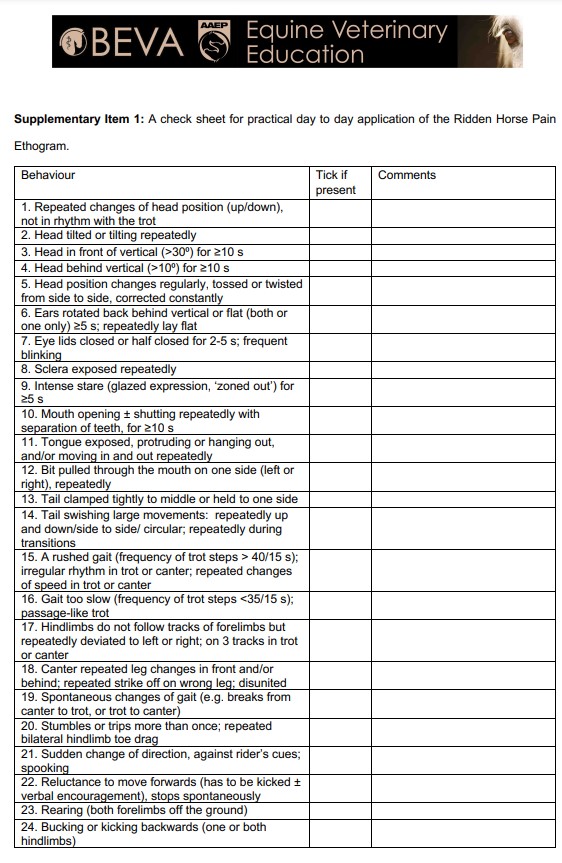Is Your Horse in Pain or Just Acting Out? Discover the Hidden pain in your horse.
One of the toughest questions horse owners face when something feels off is this:
Is my horse reacting to pain — or just being difficult?
Often, a veterinarian is called to examine the horse. Yet, if there’s no obvious physical issue, the horse may get labeled as having learned bad habits. At other times, people brush off these quirks and say, “that’s just how that horse is.”
However, in reality, these so-called quirks can be your horse’s way of begging for help.
What Is the Ridden Horse Pain Ethogram?
To address this challenge, Dr. Sue Dyson, VetMB, PhD, developed the Ridden Horse Pain Ethogram (RHpE) in 2018. This powerful tool helps owners and trainers detect hidden pain in your horse to include lameness and discomfort.
Specifically, the RHpE outlines 24 observable equine behaviors. Research shows that if your horse displays eight or more of these signs under saddle, pain is very likely the culprit.

The 24 Telltale Signs Your Horse Could Be in Pain
Here’s what to watch for:
- Repeated head bobbing up/down, out of rhythm with trot
- Head tilted or tilting frequently
- Head held in front of vertical (>30°) for over 10 seconds
- Head behind vertical (>10°) for over 10 seconds
- Frequent head tossing, twisting, or correction
- Ears pinned flat or rotated back for five seconds or more
- Eyelids half-closed, shut briefly, or frequent blinking
- White of the eye (sclera) showing repeatedly
- Intense staring or zoned-out look lasting at least five seconds
- Mouth repeatedly opening and closing with teeth separated for over 10 seconds
- Tongue hanging out, protruding, or moving in/out often
- Bit pulled through to one side repeatedly
- Tail clamped tightly or held to one side
- Excessive tail swishing, especially during transitions
- Rushed gait (trot >40 steps per 15 seconds) or irregular rhythm
- Gait too slow (trot <35 steps per 15 seconds); passage-like steps
- Hind legs not tracking forelegs, creating a three-track movement
- Frequent lead changes, wrong lead, or disunited canter
- Spontaneous changes of gait without being asked
- Multiple stumbles, trips, or dragging hind toes
- Sudden changes of direction or spooking
- Reluctance to go forward, needing strong encouragement
- Rearing (both front legs off the ground)
- Bucking or kicking backward
What Should You Do Next?
Importantly, if your horse shows eight or more of these behaviors — or if your instincts tell you something isn’t right — consult an experienced equine veterinarian.
Early detection matters and could prevent chronic pain, behavioral fallout, or worse.
For a deep dive, read the original research here:
👉 The Ridden Horse Pain Ethogram – BEVA Journal
Want to learn more about horse care? Click here to learn how to treat an abscess!
